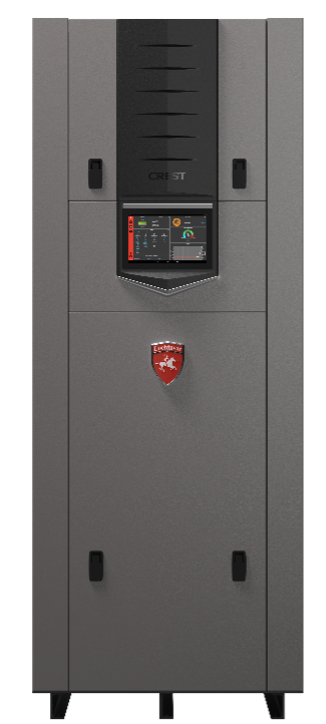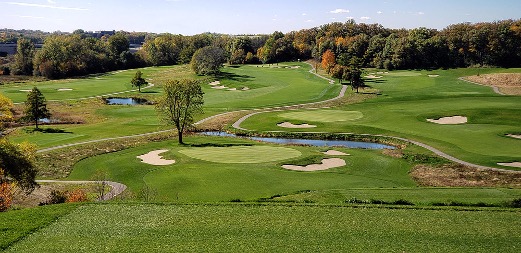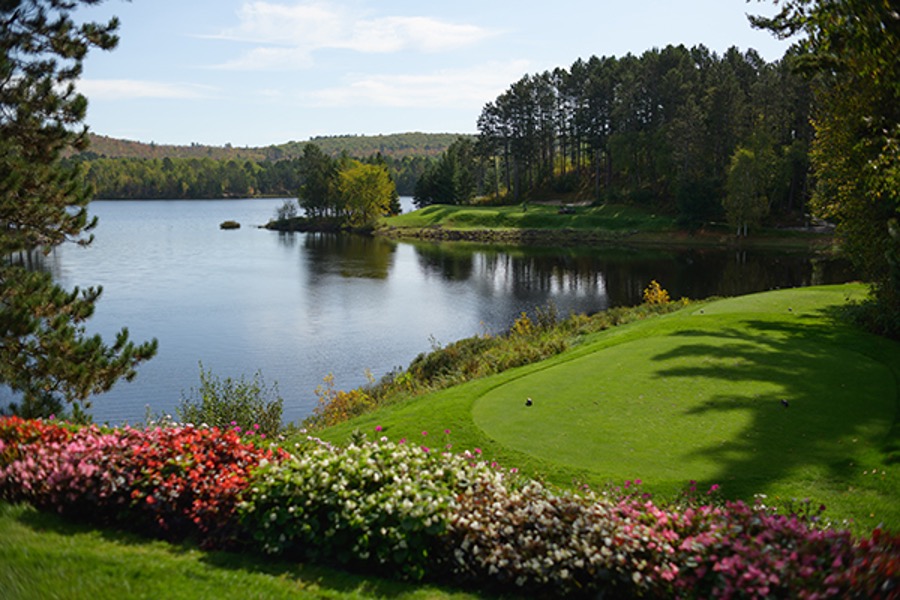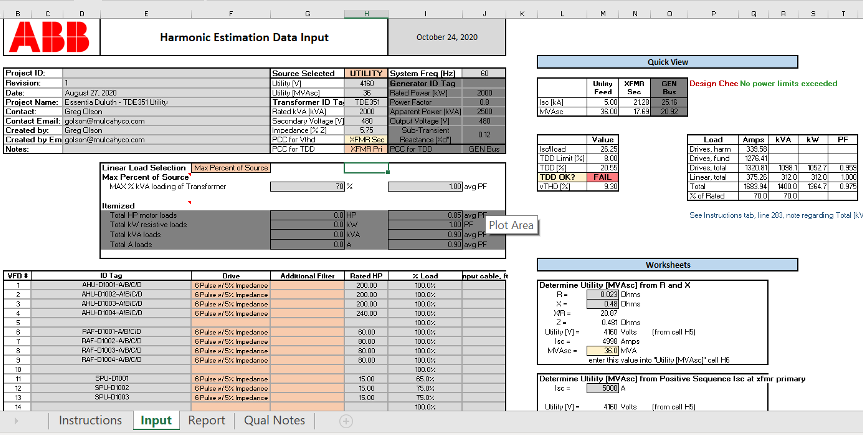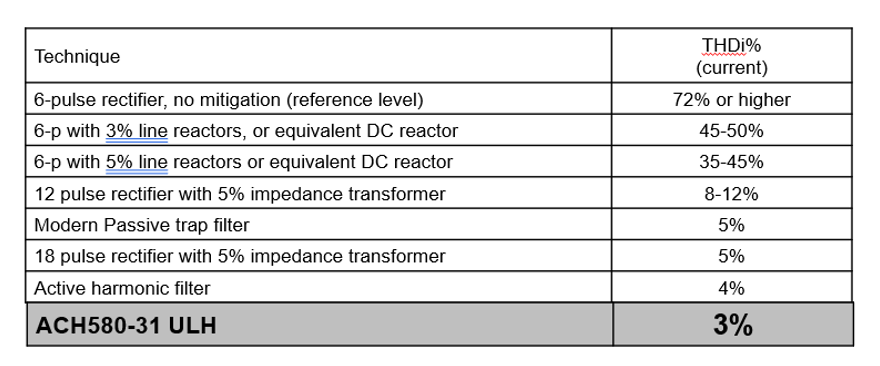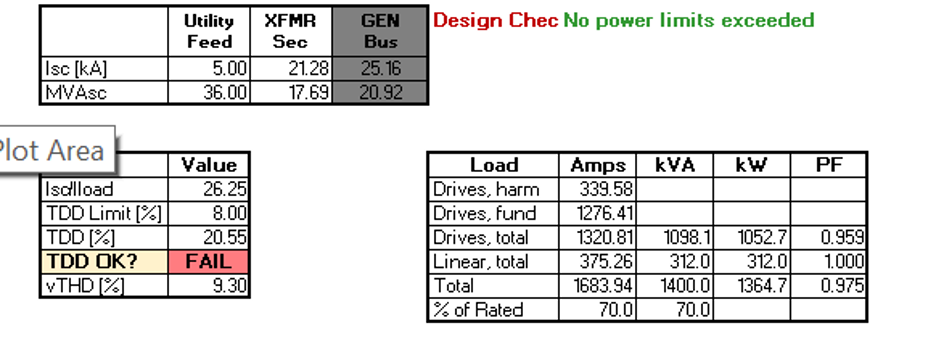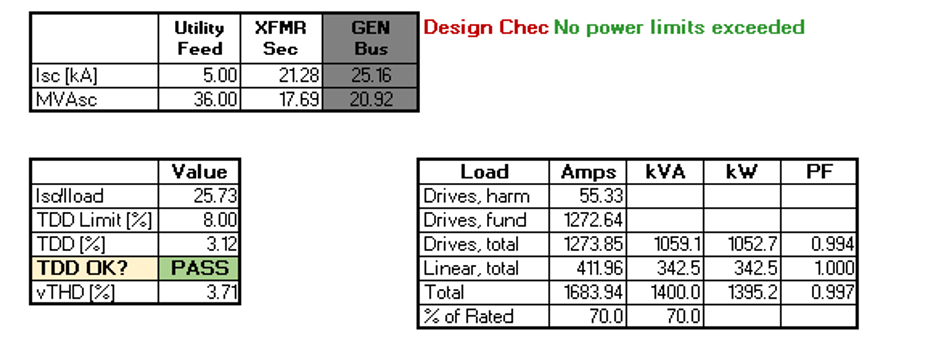Spring Fishing in Minnesota, Mike Comstock
Like many living in the north central part of the country, I look forward to getting on the water to fish. It’s a great resource to be enjoyed by the whole family. Here is a little guide to fishing possibilities around the metro and outstate Minnesota.
If you have kids and want them to enjoy fishing for a lifetime, buy them a $10 single-piece rod of their favorite cartoon character to use as the ice goes out. Crappies are typically what we go fishing for until the walleye season opens Mid-May. These bountiful fish can be caught with minnows, leeches, plastic baits or even corn, but the best bait in most lakes is a small jig with a crappie minnow. If you have a boat, look for bays with shallow water that warms faster, typically on the north side of the lake. Crappies will start to spawn when the water temperature gets close to 60°F. (Hint: Lilacs bloom around the same time.)

Minneapolis Area Lakes
Lake Minnetonka – The lake is known for largemouth bass but has a lot of walleyes that can be caught in the spring and fall when boat traffic is down. There are a lot of bays and shallow areas to target that will warm up earlier. For crappie in these areas, try a light line-bobber and small jig (add minnow). The lake is also known for BIG muskies in the 50”+ range in the fall, if you want to up the challenge and reward possibilities.
White Bear Lake – Water levels here have fluctuated over the years but have recently stabilized. Largemouth bass are a favorite with panfish and muskies being the next sought-after fish. Start in the bays for crappie, but find the weed lines near the drop-offs.
Prior Lake – In early spring the crappies can be found in the shallows near the deeper water in the bays and near the bridge. Walleyes can be caught in the deeper areas of the lake where there is structure late afternoon.
Northern Minnesota Lakes
Mille Lacs Lake – Crappies can be caught in back bays and channels in spring as the water warms. Walleye and smallmouth bass can be caught along the rocky points and reefs early and late in the year. Minnows, plastics and crank baits work in spring and fall. Summer brings walleye deeper to the mud flats. Leaches and night crawlers are the most common bait options for success. This lake also offers the opportunity of big muskies in fall.
Pokegama Lake (Grand Rapids) – Crappies are abundant, but it’s a matter of finding the right bay where they are spawning and watching water temperatures. There are a lot of big walleyes due to the smelt in the lake. They can be caught along the weed lines & sunken islands with minnows, leaches or night crawlers.
Lake Vermilion – Crappies can be found along the north shore of bays and inlets. Look for some vegetation or cover. Walleyes are usually a primary focus here and can be caught shallow in the spring but will move out deeper as the water warms.
I hope this gives you a good start to enjoying a lifelong activity that can lead to many friendships and valuable life experiences.
Water Furnace Modular Chiller Solution

The Water Furnace TruClimate 300 (formerly the WC HybrEx) is a modular water-cooled chiller that can be the solution to a lot of challenging scenarios. For example, many chillers are coming to the end of their service lives and replacing them have challenges that didn’t exist when the system was first constructed. The walls that enclose the chiller room were built after the units were placed and now limit the size of the replacement. Besides, construction cranes are no longer on site to move items around.
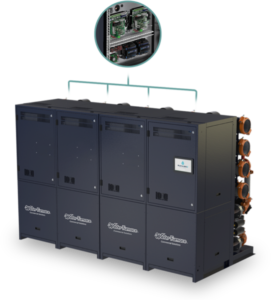
This is where the AHRI-certified cooling-only TruClimate 300 comes to the rescue. Rather than installing a single large unit, replace the chiller with multiple modular units piped together to efficiently deliver the desired capacity. The individual 30 ton and 50 ton modules are easily moved through a standard 36” door with a simple pallet jack and fall within the weight limits of most freight elevators.
One of the biggest features of the TruClimate 300 is its robust tube-style heat exchanger for condensing which stands up to sediment and particulates usually associated with open cooling towers. That means less downtime for flushing and cleaning. This condenser provides the efficiency of a brazed plate while minimizing heat exchanger fouling.
Beyond just replacing an aged piece of equipment, the TruClimate 300 is an opportunity to upgrade a chiller plant’s hardware and controls. The TruClimate 300 utilizes premium-efficiency scroll compressors housed in a compact cabinet for easy installation. Optional permanent magnet DC inverter drive lead scroll compressor is available on the 30 and 50 ton module sizes to increase capacity turndown and efficiency.
Once the factory-tested modules are installed, the Aurora HydroLink2 controls make the final system operate efficiently. The system not only does lead lag of each module for capacity control, but its supervisory controls also equalize the run time across each module. This balances usage and is all managed internally to the control sequences. The platform also provides numerous factory-installed options for better service, diagnostic and monitoring abilities. Preventative alarms make it easy to stay on top of maintenance. Refrigerant, energy and performance are tracked through the HMI or DDC protocols.
Head pressure control is maintained using modulating isolation valves. This allows the chiller to be operated under a wide range of temperatures. Because it’s monitored at each individual module and not system wide, there’s no single point of failure. The redundancy of refrigeration circuits and chiller modules provides additional reliability.
The Best Ability is Availability
There are many critical HVAC systems currently operating with degraded efficiency and on the brink of failure. Often, it’s the central air handling unit (AHU) that is on life support and is exhibiting the symptoms of soon and unrepairable failure. However, these ubiquitous pieces of equipment currently carry some of the longest lead times in our industry. Quick replacement usually means sacrificing options and quality.
Let Mulcahy Company and VTS offer you a solution!
We can select, configure and price a new customized AHU for you in a matter of minutes to meet your performance and dimensional requirements. The numerous options allow us to meet the requirements for most applications.
The key is the configurable modular design. The ability to orient fans, coils, heat wheels, filters, etc. result in a final design that can meet the space and performance goals. For this reason, VTS air handlers were chosen for the retrofit of the Milwaukee Athletic Club. The short lead time fits in with the phased construction schedule. The project totaled over 20 units ranging from 1700-10,000 cfm to transform the building’s mechanical systems.
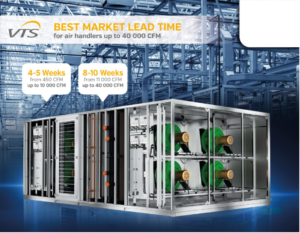

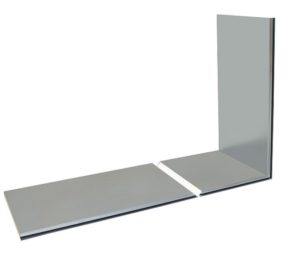
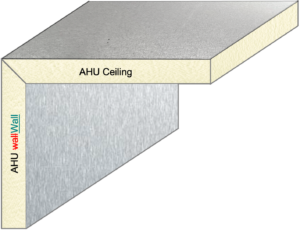
Winter & Beer
Given the seasonal nature of some beers, most beer connoisseurs have a few favorites they anticipate each time of the year. In the fall, many look forward to numerous Oktoberfest biers that make a brief appearance. In the winter months, brewers showcase an offering of darker and stronger stouts and ales. Winter ale, although not a defined beer style like stout, is a widespread brewing tradition in much of the country. Brewing a stronger beer to thwart the effects of the cold weather months is undoubtedly as old as brewing itself and for many is as much a part of Christmas as Jingle Bells. Here are a some of our favorite winter beers:
Sierra Nevada Celebration IPA- This is a different sort of winter warmer, but its longevity and national popularity proves its worth. It is a great and inexpensive option for a fresh hopped ale.
Summit Winter Ale – A local winter ale, based originally on the British Warmer style of beer has also stood the test of time.
Schell’s Snowstorm – This winter seasonal offering changes slightly year to year. This year’s version is described as a malt driven Oat Starkbier.
Surly Darkness – This gem came out in late October and might be hard to find. However, the barrel-aged version is due out in February.
Goose Island Bourbon County Brand Stout – The beer released on Black Friday can still be found on store shelves. People wait in line for the variants of the base version. The 14% ABV is not for the meek.
Junkyard Brewing – Barrel-Aged King-Size and Queen-Size Stouts – This pair of stouts from Fargo are both available now in barrel-aged versions for extra flavor. These peanut butter stouts might be worth a road trip.
Bent Paddle Double Shot Double Black – It’s all in the name for this bourbon barrel-aged beer out of Duluth
Trinity Health – North Dakota
In 2017, EasyWater began working directly with TRC Worldwide Engineering on the water treatment for all the water-using equipment for Trinity Health, a large new hospital in Minot, North Dakota.
The water in this area is very hard. It is also lime-softened, which gives it a high pH. This made the treatment of the domestic water and cooling towers, in particular, more challenging.
This project was unique in that it had two phases because Trinity Health changed mechanical contractors mid-stream. EasyWater ended up supplying the complete water treatment for this facility including:
- CTF System (cooling tower treatment)
- Series C (closed loop chilled and hot water treatment)
- No-Salt Conditioner (domestic water)
- Smaller SmartGuard RO (kitchen and kitchenettes on the upper floors)
- Larger SmartGuard RO system (steam boiler make-up water)
- DI Equipment (higher purity water)
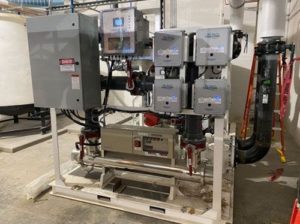
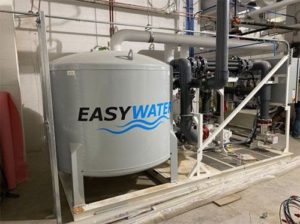

ecocirc® 20-18 Part 2
Since its introduction, the Bell and Gossett ecocirc® 20-18 has been a tremendous success. The newest generation variable-speed ECM smart circulator provides a superior solution for heating, cooling, and potable water applications. This field-proven pump can replace 70 different models currently available in the marketplace. It is truly a Smart Circulator that can be wirelessly configured to best operate within your system. So, it comes as no surprise that Consulting- Specifying Engineer Magazine gave its MVP Product of the Year award to the Bell and Gossett ecocirc® 20-18.
If you needed another reason to use this best-in-class pump, it’s been recently announced the ECM pumps, such as the ecocirc®20-18, are eligible for a rebate from some electrical utilities. (See below.)
New prescriptive program effective 1/1/21: https://www.xcelenergy.com/staticfiles/xe-responsive/Programs%20and%20Rebates/Business/MN-HVAC_R-application.pdf

ecocirc®20-18 Features:
- Maximum of 20 feet of head or 18 GPM
- 70W maximum power
- 3 modes – proportional pressure, constant pressure, or adjustable speed control
- Fluid temperature: 14-230ºF
- CircGuard™– complete integrated system protection
- Automatic air purge to remove any air trapped in the pump
- One turn knob and multicolor LED display for easy reading and setting of the pump
- Check valve included in box
- Insulation shell included
ecocirc®+ 20-18 Features:
The ecocirc®+ 20-18 comes with all the standard features found on the ecocirc® 20-18 plus the following premium features:
- Bluetooth communication+
- 0-10V input+
- Temperature control+
- eAdapt autolearn and Night Mode+
- Digital display+
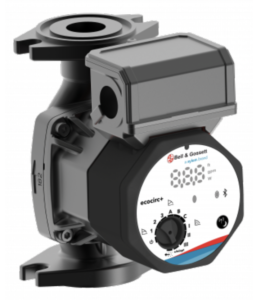
Lochinvar Lock-Temp Tanks
A simple-looking tank contains a lot more engineering than meets the eye. Take the Lochinvar Lock-TempR series of tanks used in their Better Approachr to potable water heating. Beyond the ability to simply hold a volume of water, these tanks are designed to maximize their effectiveness in a system.
The Better Approachr separates the heat source and storage functions to provide design flexibility and maintain long-term efficiency. Getting the most USEABLE volume from the tank is a key component. As a system uses hot water from the storage tank, it is replaced with cold water reducing the overall energy remaining and potentially the stored water temperature. The trick is to keep the cold water separated from the hot water for as long as possible. This maximizes the actual amount of hot water available; i.e, maximizes drawdown. The engineers at Lochinvar have developed a hot water storage tank that allows for 80% of the volume to be drawn down without sacrificing supply water temperature.
The Lock-TempR series of tanks are available in a variety of sizes and insulation types suitable for both indoor and outdoor applications. All the tanks come standard with fused-glass lining and can be configured horizontally or vertically.
As you can see, a lot goes into these not-so-simple tanks. Overall, it would be hard to find a better tank for potable water systems than a Lochinvar Lock-TempR.
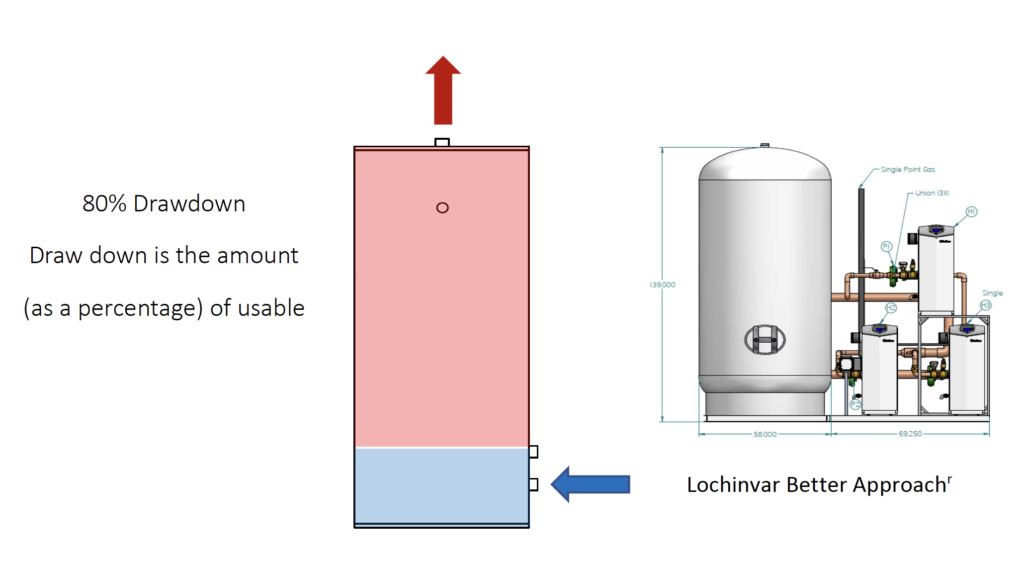
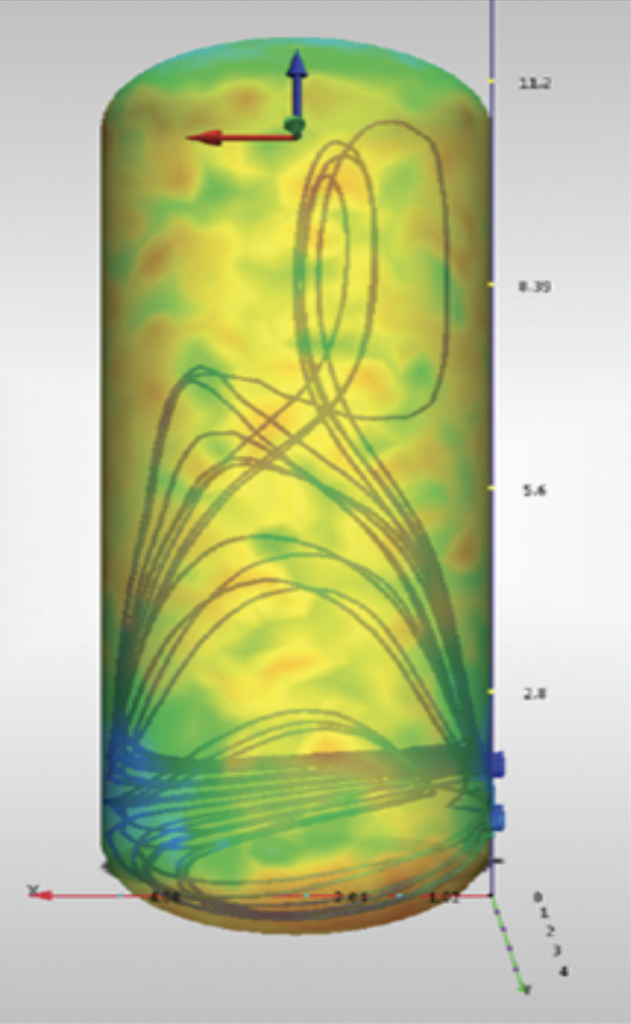
Storage tank without baffle, unable to load the tank evenly.
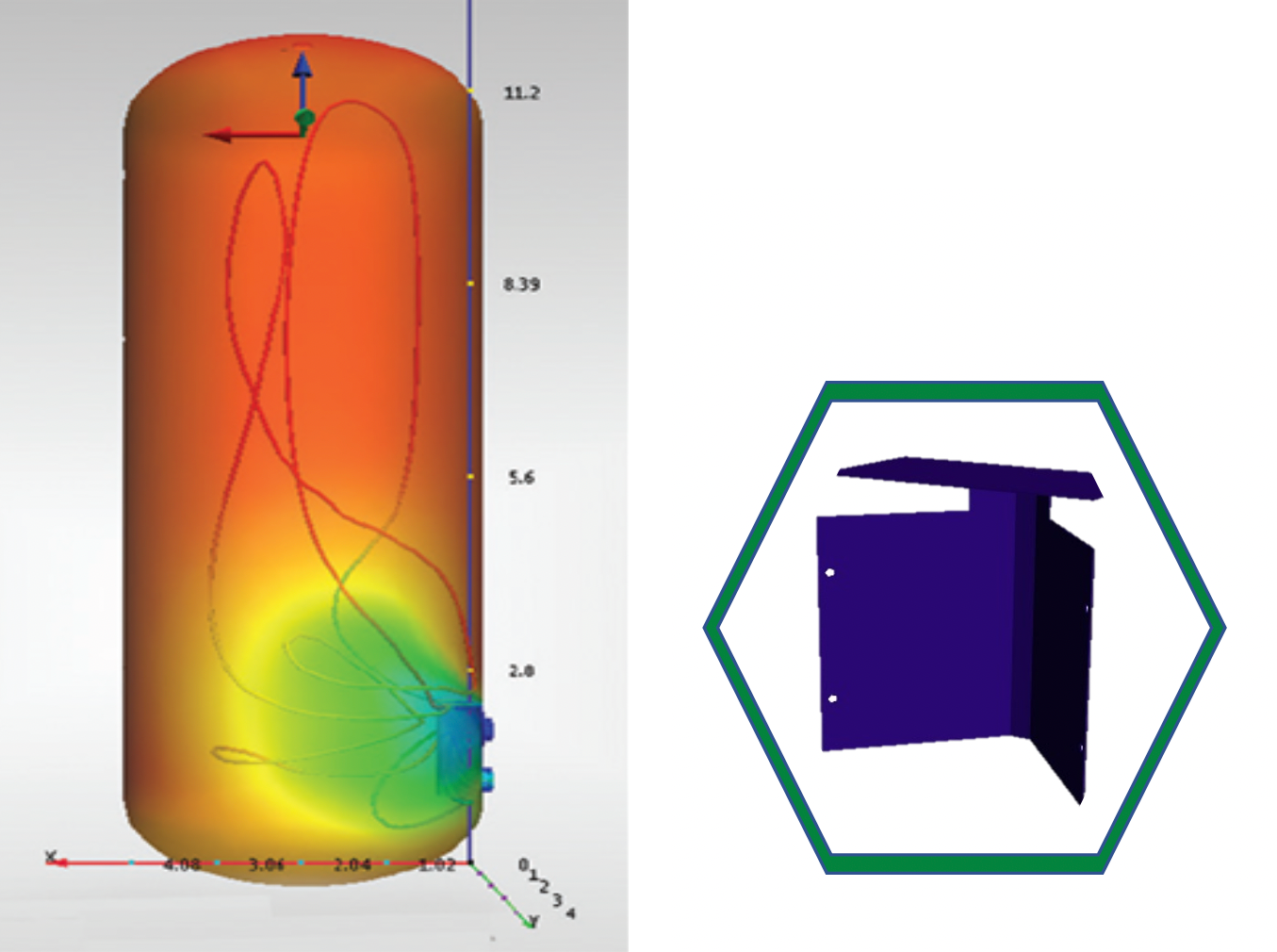
Storage tank with baffle, able to load the tank evenly.
Hellcat: Lochinvar’s Latest Innovation
For over a decade, the Lochinvar CREST has been an efficient and reliable source of hydronic heat. The product line has been improved over the years to take advantage of new technologies and components.
Past significant improvements include but aren’t limited to redesigning combustion air systems to utilize a single fan, improving the heat exchanger to allow greater heat transfer, and upgrading the controls for greater connectivity.
The latest innovation is the Hellcat combustion control system. This field-proven (more on that later) option adds continuous O2 monitoring and adjustment (aka O2 trim) to improve operation. A common challenge for peak condensing boiler operation is maintaining the proper fuel-to-air ratio, especially considering the wide range of ambient conditions we experience. Excess oxygen in natural gas and LP combustion prevents a boiler from condensing and capturing 10-12% of energy an owner paid for. Some systems just accept a certain amount of variability in operation. However, if a boiler is to constantly maintain peak performance, the adage of “measure to manage” must be applied. Unlike very large industrial boilers, no cost-effective opportunity for adaptation and improvement existed for smaller commercial-sized systems until now. The Hellcat system continuously monitors combustion and adjusts to maintain optimum operation.
Given that heating plants are a CRITICAL system in our region, extensive field testing and proving is a requirement before Mulcahy will recommend any product to our customers. Mulcahy was involved in an extensive Twin Cities metro area field test installation of the Hellcat system that was continuously monitored over an entire heating season.
The 1.5 million BTU/hr input natural gas sealed combustion boiler had no interruptions of operation despite the wide range of air temperatures and density (more important for combustion control). How wide a range you might ask? The Hellcat system adjusted flawlessly over the equivalent of a 7000 ft range in altitude changes without adjustment. (The total range of operation is larger; we are just reporting what we observed). To put this in perspective, a normally aspirated internal combustion would lose 20-25% of its output power and require changes to the fuel input to keep running. Modern car engines can maintain fuel/air mixture ratios, but a power drop still occurs. The Hellcat system maintained full output capability AND tight combustion control. It is better than your car.
As stated before, heating plants are a critical building system in our region of the country. They are also a significant operating cost to building owners and the Lochinvar CREST with Hellcat control checks all the right boxes. Your local experts at Mulcahy would love to be a part of your next system.
For a more detailed description see https://www.lochinvar.com/products/commercial-boilers/crest-with-hellcat-combustion-technology
Lochinvar Crest
Land of 10,000 Links
Written By: Jeff Bennett
The North Star State truly does love golf! Year after year, Minnesota ranks in the top 10 in both golfers per household and golf courses per capita. Because of our love for the game, I thought it would be fun to share two of the amazing courses Minnesota has to offer. Everyone knows about Hazeltine National, but there are some great courses out there that have proven to be a fun challenge without breaking the bank. I’ll be highlighting one local course and also a resort about three hours up state in the Iron Range.
Braemar Golf Course – Edina, MN
In the spring of 2019, the city of Edina opened its new 18-hole Braemar Golf Course designed by Richard Mandell. The new course replaced the original 27-hole facility, giving the golf holes more space. It also allowed the city to expand wetland areas and restore over 30 acres of oak savanna. After almost three years of work, the new Braemar 18 is a beautiful yet forgiving golf course for people of all skill levels. “Width for strategy has always been an element of my philosophy, going back to the nineties,” said Mandell.
On several holes Mandell has also employed central hazards, which emphasize the shot choices available. At the par-five fourth, for example, golfers can either choose a direct route to the left of a series of central bunkers or take the safer, but longer, high route to the right of them. This second option also rewards well-executed shots with a kick down the hillside towards the green. “The hazards are there not to punish golfers, but to challenge them to think their way around the golf course,” said Mandell. Braemar will prove to be one of the best courses for the money, especially when applying the Edina resident discount.
Braemar Golf Course – Edina, MN
Giant’s Ridge Resort – The Quarry and The Legend Golf Courses – Biwabik, MN
Giants Ridge, home of two Jeffrey Brauer-designed courses, has long been considered one of Minnesota’s best resort golf vacation destinations. Few other golf facilities in the nation can claim more than one course in Golf Digest‘s “Top 100” list like Giants Ridge can. Using the double play deal, I like to start with The Quarry golf course in the morning. The Quarry will be one of the most challenging golf courses you will ever experience, and the lunch included in the deal will give you a much-needed break to regroup. The more forgiving Legend golf course is next, offering wider fairways and less required hazard carry. The par-three #17 (pictured below) is The Legend’s signature hole, and it might be the most beautiful par-three in the state. After golf, head back to the Golf Villas to enjoy the evening and recall the struggles of the day. Dinner on your deck with golf friends overlooking Lake Wynne is the perfect finish to amazing day of golf.
The Legend Golf Course #17
Sources
Slashing Harmonics $aves
It is obvious how a variable frequency drive (VFD) saves energy and money by operating a motor at a reduced speed. Beyond just the reduction in power savings, VFDs with their inherent soft start and ramping can save in other ways such as equipment wear and tear. There is a new and exciting way VFD’s can impact building energy use beyond the piece of equipment it operates. It has to do with building electrical harmonics and how a building consumes electricity.
Electricity usage is different than other utilities used by a building. Water and natural gas consumption are directly measured. A given device that uses less of the resource to perform the desired output (i.e. more efficient) will cost the building owner less. An individual meter could be installed to determine the specific cost of operation.
With electrical loads, the manner in which a device draws its energy impacts the cost of operation along with the actual load. A buildings total system is comprised of linear and non-linear loads which results in a total building current (i.e. what the owner pays for). This total current is made of fundamental current + harmonic current. The fundamental current is useful work being performed while the harmonic current is in effect the inefficiency of the system. More non-linear loads = more harmonics = LARGER utility bills. (NOTE: ABB has several technical articles that go into much greater detail if want to learn more)
VFDs get a lot of attention because they are large non-linear loads and responsible VFD manufacturers such as ABB have developed products and tools to predict and mitigate the harmonics they produce. It is the latest product from ABB coupled with their harmonic calculators that allowed a large medical complex to improve their overall bottom line by using ABB Ultra Low Harmonic (ULH) variable frequency drive.
Initial calculations predicted an unacceptable amount of harmonics even with the ACH-580 industry-leading harmonic reduction features. The ABB harmonic calculation tools evaluated various options including harmonic traps, line reactors, and 18 pulse input units. Through this evaluation process, utilizing the ABB-580-ULH was found to reduce the VFD harmonic currents by a massive 285 Amps while meeting the buildings loads. This load reduction not only positively impacts energy costs, but also system areas like distribution transformer lifespan and sizing, and back-up generator operation.
If you have any curiosity about HOW the ULH saves this $$$$ beyond the motors it serves, we’d love to have that conversation with you. Contact the VFD group at Mulcahy to learn more about this game-changing product.
ABB Harmonic Calculator
Typical Harmonic Reduction Technique Comparison
Harmonic Calculation Key Results for a recent project
Initial Harmonic Evaluation
Ultra-Low Harmonic Evaluation
ULH Impact
284 Amp (83%) Reduction !
40% THD Reduction!
